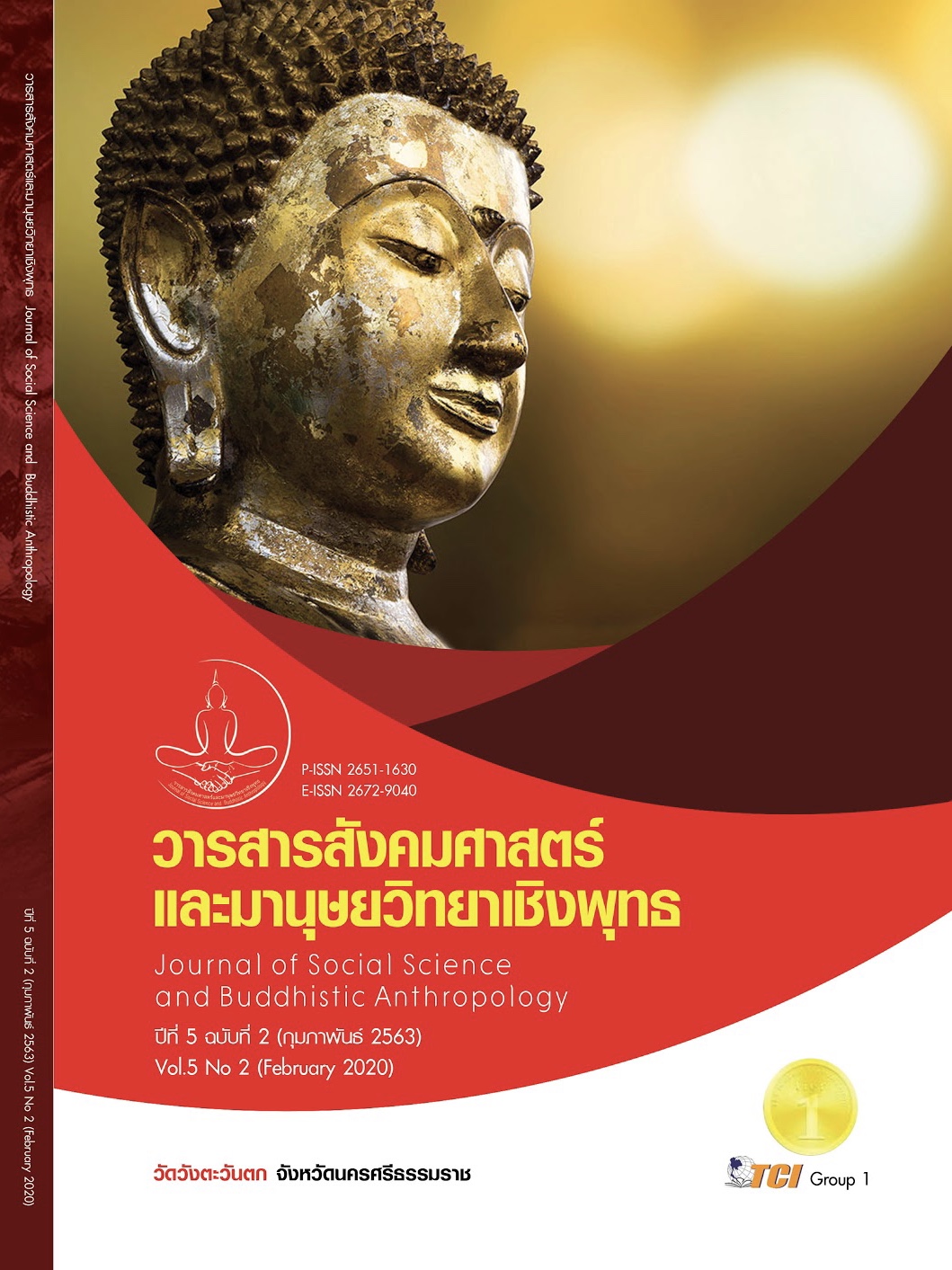THE DEVELOPMENT OF AN ONLINE CONTENT MARKETING STRATEGY OF TEXTILE FABRIC HANDICRAFT PRODUCT IN CHIANG MAI PROVINCE THAILAND
Keywords:
Content marketing, Acceptance product, Attitude, Purchase intention, HandicraftAbstract
The research is divided into 2 phases as follows. First phase research is the result of the research used a mixed method. Quantitative research and qualitative used a sample group of 400 social media users using online questionnaires to collect data. Qualitative research results Is an in-depth interview with successful textile handicraft entrepreneurs from content marketing and consumers who used to buy handicraft fabrics, 5 persons and Focus group with the successful textile handicraft entrepreneurs from content marketing 5 persons to confirm the results of the model development obtained from research which is named Zeven - Zix Model. This research developed the model of Zeven - Zix Model Content is an important factor that affects the Acceptance of customers' products, woven fabrics.
Second phase research Is knowledge training and online content marketing skills for textile operators with a sample group of entrepreneurs in the category of textile handicraft products in Chiang Mai Province, 30 people using purposive sampling with pre-test and post-test results. The research found that content marketing training with the effectiveness index with EI = 0.670, meaning participants had a score 67.00 percent higher than training that the lessons on online content marketing strategy development of textile fabric business group Chiang Mai Province Resulting in an average score after studying higher than the average score before studying with statistical significance at the level of 0.05.
References
Ausra pazeraite and Ruta repoviene. (2016). Content marketing elements and their influence on search advertisement effectiveness: theoretical background and practical insights. Sisteminiai tyrimai, 75(1), 97-109.
Cheong H.J. & Morrison M.A. (2008). Consumer reliance on product information and Recommend found in UGC. Journal of Interactive Advertising, 8(2), 38-49.
Daugherty T. Eastin M. & Brigh S. L. (2008). Exploring consumer motivations for creating user-generated content. Journal of Interactive Advertising, 8(2), 38-49.
De Vries L. Gensler S. & Leeflang P. S. H. (2012). Popularity of Brand Posts on Brand Fan Pages: An Investigation of the Effects of Social Media Marketing. Journal of Interactive Marketing, 26(2), 83–91.
Fei Wan & Fei Ren. (2017). The effect of firm marketing content on product sales: evidence from a mobile social media platform. Journal of Electronic Commerce Research, 18(4), 288-302.
Gagnon E. (2014). Goodbye, B2B Brand Marketing:Developing Content-Based Marketing Programs for the Post-Marketing Era. International Management Review, 10(2), 68–71.
Karen P. Y. Liu et al. (2013). Effectiveness of a Workplace Training Programmer in Improving Social, Communication and Emotional Skills for Adults with Autism and Intellectual Disability in Hong Kong A Pilot Study. Occupational Therapy International, 20(4), 198-204.
Loredana patrutiu baltes. (2015). Content marketing - the fundamental tool of digital marketing. Economic Sciences, 8(2), 111-118.
Ludwig S. et al. (2012). More than Words: The Influence of Affective Content and Linguistic Style Matches in Online Reviews on Conversion Rates. Journal of Marketing, 77(1), 87–103.
National statistical office. (2018). Information and communication Technology Survey in household. Bangkok: National Statistical Office Ministry of Digital Economy and Society.
Pulizzi J. & Barrett N. (2009). Get content. Get customers. New York: McGraw Hill.
Taro Yamane. (1973). Statistics: An Introductory Analysis. (3rd Ed). New York: Harper and Row Publications.
The Federation of Thai Industries. (2018). Thai Industries Sentiment Index. Retrieved January 2, 2020, from https://www.fti.or.th/2016/download /technical
United States Agency for International Development. (2014). Social Networking: A Guide to Strengthening Civil Society Through Social Media. New York: Media Corporation.
Vinesh. (2014). Role of Training & Development in an Organizational Development. International Journal of Management and International Business Studies, 4(2), 213-220.
Woodside. (2010). Brand-consumer storytelling theory and research Introduction to a Psychology & Marketing special issue. Psychology and Marketing, 27(6),531-540.
Zeng, F. Huang L. & Dou W. (2009). Social factors in user perceptions and responses to advertising in online social networking communities. Journal of Interactive Advertising, 10(1),1-13.








